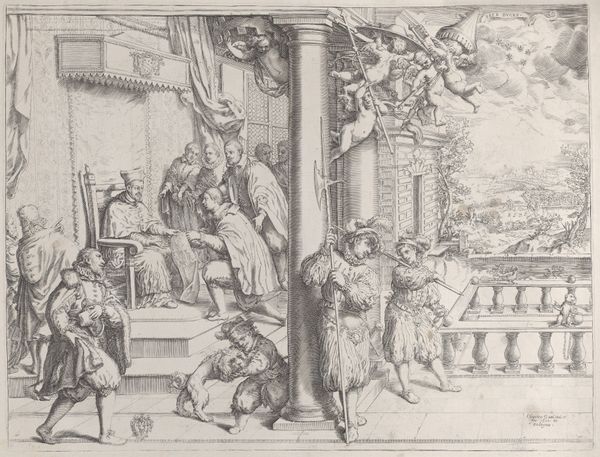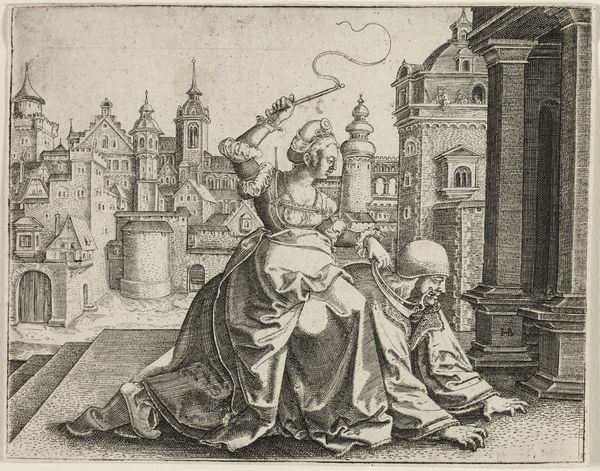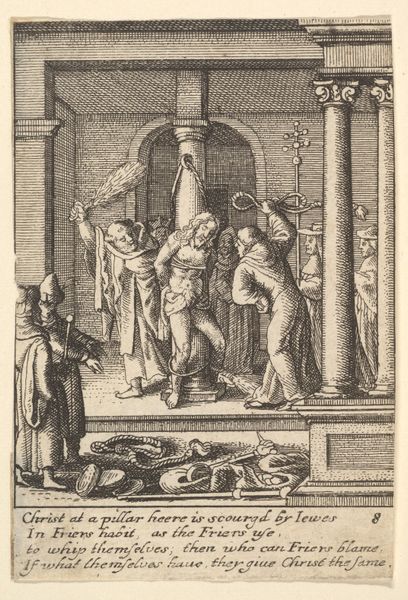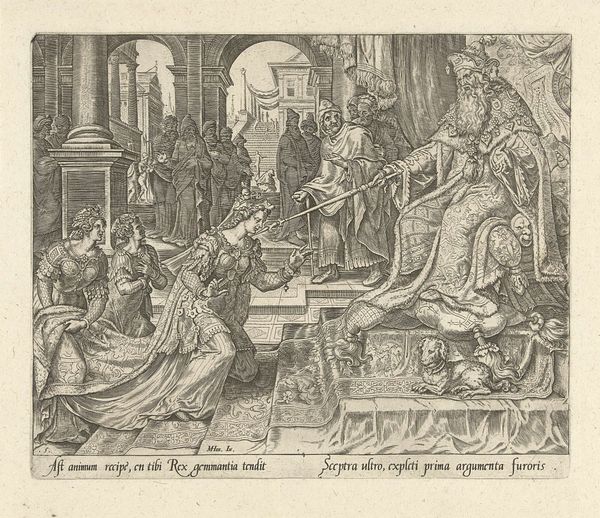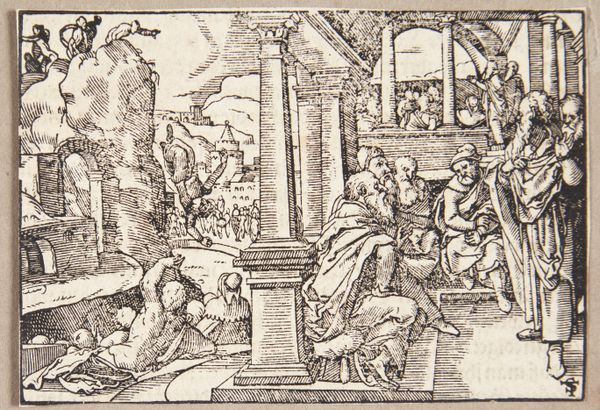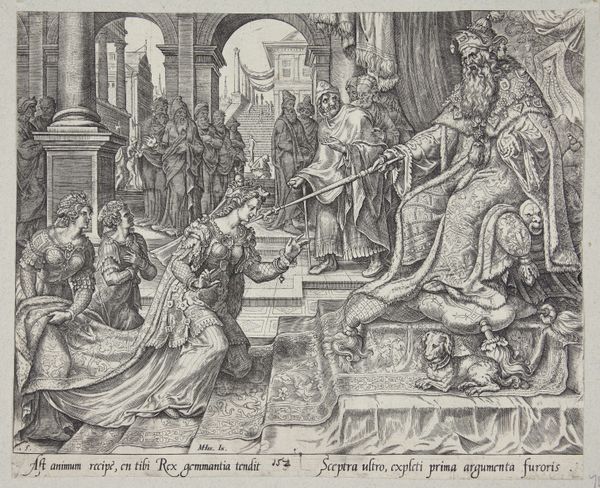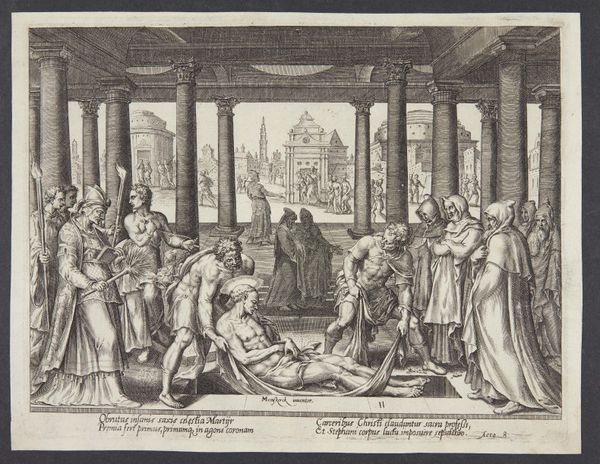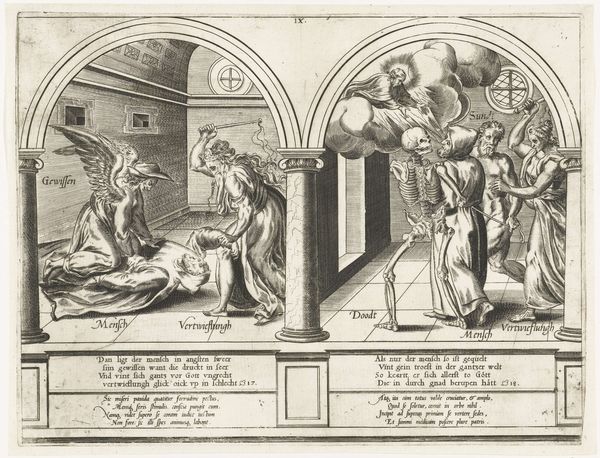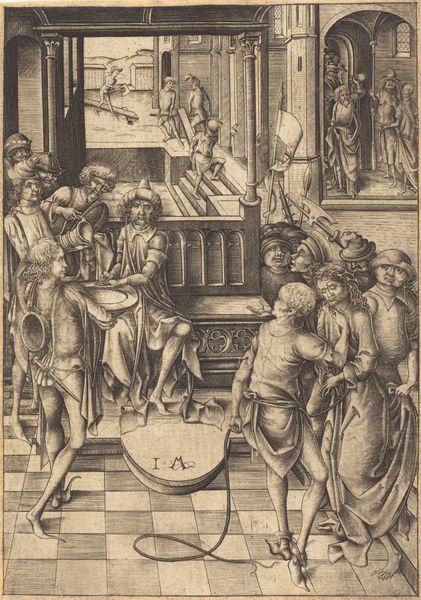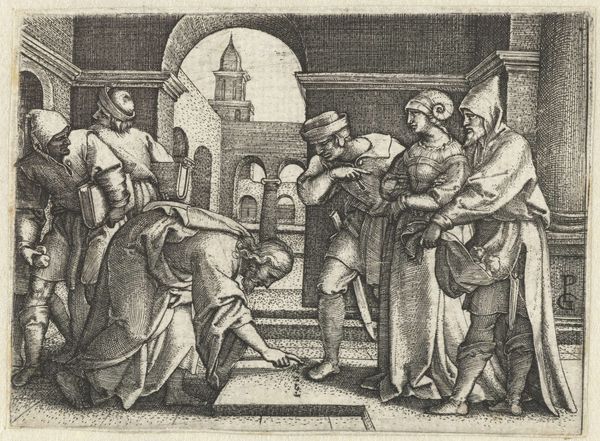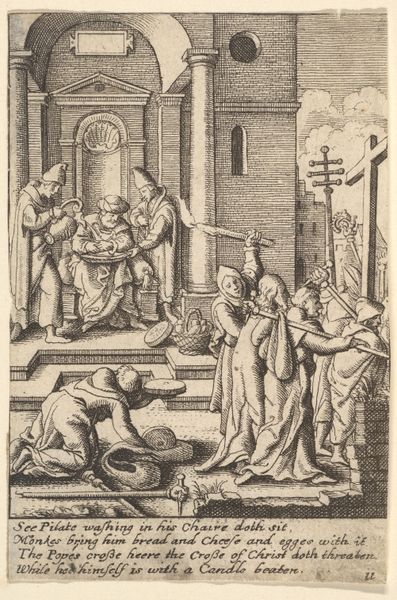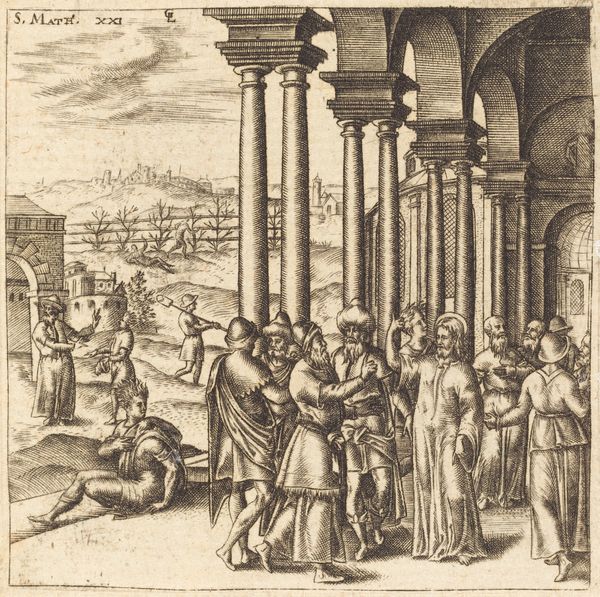
drawing, print, paper, engraving
#
drawing
# print
#
landscape
#
figuration
#
paper
#
history-painting
#
italian-renaissance
#
engraving
Dimensions: 79 × 96 mm (image/plate/sheet)
Copyright: Public Domain
Curator: Here we have Hans Brosamer’s “David and Bathsheba,” a circa 1545 engraving printed on paper, currently residing at the Art Institute of Chicago. Editor: It's striking how much architectural detail Brosamer packed into this small print. Almost oppressive, this rigid, boxy construction. Is that intentional, do you think? Curator: I think the architectural setting speaks to the time it was made. Renaissance patrons often had elaborate bathhouses for private use. Consider also, this is part of a broader trend during that period, linking power and visual representation. How are rulers, or supposed rulers, seen? Editor: Right, the image of rulers... And in that vein, this isn't just about beauty, is it? It's a depiction, almost a justification, of abuse of power. David's position allows him to gaze upon and then command Bathsheba. Where is the power of the woman? The other women in attendance are looking. Curator: The power, as with most art of that era, rested solely with men. Brosamer presents a biblical narrative viewed through a distinct lens shaped by the social expectations of his time, reflecting on power and control. His rendering aligns with traditional depictions prevalent in Renaissance art, showing how stories are consistently retold to reflect societal biases and power dynamics. Editor: And what message was it relaying to the society consuming the image? An understanding, if not an acceptance, of a ruler's assumed right? An attempt to use history to codify a power structure? Curator: Exactly! And how that codified structure plays out over time to create power imbalances and injustices for women. As a piece, this shows us the mechanisms of cultural power; to understand the power of institutions, how political imagery is mobilized, even from this story we think we know. It also becomes vital that the audience reflect and challenge these very frameworks, don't you think? Editor: Absolutely. Reflect, challenge, and acknowledge the uncomfortable truths these pieces can unveil.
Comments
No comments
Be the first to comment and join the conversation on the ultimate creative platform.


